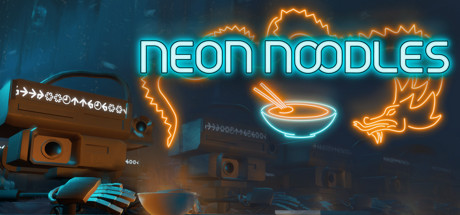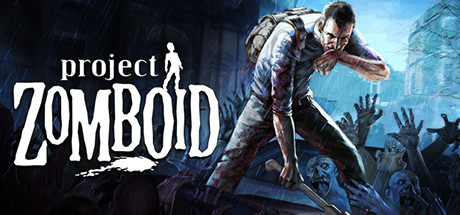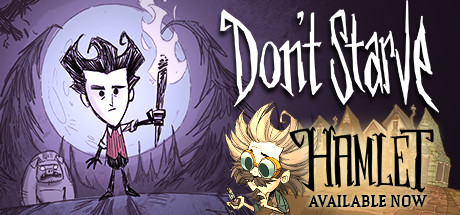Neon Noodles Reviews
In a future where food is the ultimate symbol of status, you are a recipe programming technician for a ruthless aristocracy. Create, test and optimize your culinary machines in this deliciously dark zach-like!
| App ID | 990900 |
| App Type | GAME |
| Developers | Vivid Helix |
| Publishers | Vivid Helix |
| Categories | Single-player, Steam Achievements, Steam Cloud, Full controller support, Steam Leaderboards |
| Genres | Indie, Simulation |
| Release Date | 3 Aug, 2023 |
| Platforms | Windows, Mac, Linux |
| Supported Languages | English, Portuguese - Brazil, French, Italian, German, Spanish - Spain, Simplified Chinese, Traditional Chinese, Japanese, Russian, Korean, Spanish - Latin America, Romanian |

102 Total Reviews
82 Positive Reviews
20 Negative Reviews
Mostly Positive Score
Neon Noodles has garnered a total of 102 reviews, with 82 positive reviews and 20 negative reviews, resulting in a ‘Mostly Positive’ overall score.
Reviews Chart
Chart above illustrates the trend of feedback for Neon Noodles over time, showcasing the dynamic changes in player opinions as new updates and features have been introduced. This visual representation helps to understand the game's reception and how it has evolved.
Recent Steam Reviews
This section displays the 10 most recent Steam reviews for the game, showcasing a mix of player experiences and sentiments. Each review summary includes the total playtime along with the number of thumbs-up and thumbs-down reactions, clearly indicating the community's feedback
Playtime:
1146 minutes
The way these recipes are put together is fucked. The early dishes get simplified so far as to be unrecognizable, and the way the UI scales down for the later dishes is equally fucked in the other direction. It's also a bit too hand-holding the whole time, as rather than let you fuck around with your middle products like zach-likes typically let you do, they dictate exactly what each and every step is, and force you merely to execute the rest. This goes on through the whole game. The idea that only about 2% of players got to the point in the game I did no longer surprises me upon further thought.
👍 : 3 |
😃 : 0
Negative
Playtime:
2772 minutes
This is a well-made puzzle game that will have you thinking hard. I would call it a 'zach-like', to the extent that word means anything. The only reservations I have with this recommendation are that the difficulty curve is a little sporadic (which is honestly a common problem with these games) and that the game needs some more UI polish. Most notably, there is an annoying bug that causes instructions to be inserted in the wrong place if your programs get excessively long, and opening a menu does not make other menus noninteractable.
👍 : 2 |
😃 : 0
Positive
Playtime:
855 minutes
Fun automation game with lots of different strategies and ways to optimize the solutions. I will say the difficulty ramp on the Yakitori level is entirely unreasonable though.
👍 : 3 |
😃 : 0
Positive
Playtime:
107 minutes
Its not _Bad_ but it didn't learn anything from Opus Magnum when it comes to code manipulation. Everything is pretty clunky. Looks like they sacrificed a lot of usability for it to be controller "friendly" which I suspect it really isn't.
👍 : 5 |
😃 : 0
Negative
Playtime:
316 minutes
Great game, i liked the futuristic/cyberpunk artstyle a lot, but the thing i liked the most is that it's challenging and forces you to think a lot about every action of every robot/conveyor you place
👍 : 5 |
😃 : 1
Positive
Playtime:
511 minutes
This is a tough review for me. I LOVE zach-like games, and this one starts out SO promising! Unfortunately the pacing made me lose interest long before many key mechanics (loops and links) are introduced. This is compounded because the implementation of producers and consumers makes it impossible to automate most processes without having a bot do it.
If the game allowed setting the production rate of sources (every x cycles rather than a fixed every 2 cycles), or if conveyor belts, blenders, frying pans and other action stations blocked progression of an item until work had been completed it would solve the problem. Instead the game gives aggravating dual use errors if you attempt to load and unload a station during the same cycle.
The lack of any program length limit means the puzzles aren't difficult - just frustratingly repetitive. Introducing loops and conditionals earlier might help the situation. As-is, violating the DRY (don't repeat yourself) principle is unavoidable. Unfold all the loops manually, feed them into a clunky interface, then watch the robots do their thing.
👍 : 11 |
😃 : 0
Negative
Playtime:
918 minutes
The presentation is nice but the mechanics are pretty lackluster and frustrating. if you're hoping this will fill the hole Zachtronics left in your life, you're going to be heartbroken twice.
i stopped playing after being forced to program frustrating bots to do everything, then having those taken away and given and even more frustrating drones that you program to do everything. i doubt it gets better but if it does, it's not worth the slog to get there.
👍 : 18 |
😃 : 0
Negative
Playtime:
107 minutes
Kind of interesting story - but starting players with programming a robot kind of takes all the fun out of automation games where usually - it's about using clever dumbfire atomic actors to create something clever - whereas every single level of this game can be solved by just... programming the instructions linearly to do exactly what the level tells you.
However, the game stops you constantly from doing anything clever. Try to use conveyer belts in a just in time way? Nope - counts as using two items at the same time. Try to cleverly stack ingredient orders? Nope - can't feed two items into the thing at the same interval. Most games allow you to build in wait delays or at least have ingredients wait when they are stuck so that the things are possible.
To make up for that - they give you.. the programmable robot - which is just ridiculous overkill and loops straight back to 'oh - well this is literally just programming now - not automation or optimization.'
One of the earlier levels had a spark of real interest (where the two halves were divided by locked barriers - thus requiring some coordination of cross-elements.) - however every level after that feels just kind of uninspired and rushed - there are no pre-placed elements - here's a list of ingredients with a lot of extra steps... now just.. program a robot to do it?
The joy of an automation game is using simple - straightforward - tools to accomplish something wonderful and grand when you step back and look for it. This.. is a programming game where you program a single overpowered actor to do the entire recipe for you - and the game simply makes the recipes more and more complicated.
Neon Noodles is not a *bad* game. It's just a bad automation game - it's more just straight programming than anything else.
👍 : 69 |
😃 : 0
Negative
Playtime:
41 minutes
I am just getting into this. I think it's a great idea, but the pacing, UI, fonts, etc needs some work and more intermediate lessons to stop common player problems and help some optimization.
If you've played other games like Opus Magnum, etc then you should be pretty comfortable here. But one big hiccup is guessing how many waits you need for one robot to keep from breaking the loop.
I'll suggest yes, maybe wait til it's $10 or they polish things a bit more.
👍 : 54 |
😃 : 1
Positive
Playtime:
1249 minutes
[h1]Opus Magnum but worse[/h1]
This feels too harsh and mean for this game. It's a cool concept, and I enjoyed my time with it! I want to like it, but it's hard to recommend.
The game puts "zach-like" in the description, and that invites comparisons with games like Opus Magnum. Right now, it's even priced the same. But just about everything it does well, Opus Magnum does better, and it's missing some very large quality-of-life features that made the second half of the game tedious in a way most Zachtronics aren't.
[h2]Mechanics[/h2]
It feels a bit like a 2D Infinifactory, or a square Opus Magnum. The unusual part is that there are a few different kinds of robots, and they're pretty flexible. Your core tools are using those bots and conveyors to move food into frying pans and boiling pots and so on, transforming a stack of one kind of food into another kind of food.
Here's the thing, though: Historically, when Zachtronics does this (Infinifactory, Spacechem, Opus Magnum), transforming one item into another is only part of it. You're also trying to build a [i]shape[/i] by sticking pieces together, and maneuvering that shape efficiently is a significant part of the challenge. When we're only stacking things (the Food Court in Last Call BBS), the challenge will often include some more intricate logic to make up for a lack of robots -- Infinifactory might force you to use sensors and timers to wire things up; 21st Century Food Court will force you to wire together a bunch of logic modules alongside the assembly line.
Neon Noodles has none of that. At first, the simplicity was appealing. By the end of the game, it feels more like a lack of depth.
There were one or two levels where we got a glimpse of how you could build a much trickier puzzle game out of this. One level limits you to three robots, all linked, bans all other bots, and forces you to build a complex recipe. It stood out as one of the few times I was forced to learn some strategy other than just throwing ingredients A into pot B and conveying the result to pan C.... but:
[h3]Quality-of-Life[/h3]
...when the game actually got challenging, it was an absolute pain!
Most Zach-likes make some effort to make it easy to rearrange things when your design isn't working. Infinifactory and Opus Magnum include one feature that's badly needed here: Select a bunch of stuff you've already put down, and drag it around all at once. Instead, if you've set up your entire production line one square too far to the left, you have to drag everything you've put down [i]one at a time[/i] one square to the right.
And at that point, I usually leave everything where it is and patch things together with drones or teleporters. And those drones end up being super slow and blowing up the cycle count, but at that point, I'd rather just get through the level.
And that's just the physical layout! The bot programming theoretically is as powerful as Opus Magnum, but it's so much more obnoxious to use. I've seen the cursor glitch to a character (or more?) away from where the operation will actually be inserted. There isn't a good way to insert a "repeat what I just said twice and then go back to the start". Scrolling around and editing is janky and choppy, and instead of a dedicated "return" symbol like Opus Magnum (that gets recomputed if you add more instructions), there's a return [i]editing button[/i] that inserts all the operations needed, so I'm constantly having to go back and edit the end of a program to reflect what I did in the middle.
So if I ever have timing issues, instead of going back and rearranging the bot's programs, I'll just insert a bunch of waits.
I can see where there [i]could[/i] be a fun challenge in trying to really optimize your build and get a high score. With rare exceptions, that's the main source of challenge anyway. But with how obnoxious it is to edit a mostly-working solution, I usually wasn't compelled to try to optimize an already-working solution.
As a result, it was a pretty severe difficulty spike when the game hits you with something like the three robots or an overly-constrained map, because I had no practice optimizing, because optimizing is so annoying to do.
[h2]Setting and theme[/h2]
The idea of a very cyberpunk, abstract, neon-infused food factory sounds appealing! But the execution is... maybe [i]too[/i] abstract. Opus Magnum's machines make all sorts of interesting sounds as they clang, whirr, and zap. Neon Noodles just quietly whooshes. Cutting, boiling, frying, chilling, and conveyor belts are all completely silent, all we hear are the robots whooshing around.
Like any good cyberpunk story, this makes a point about society, about corporations at the top controlling everyone down to the food we eat... but this is undermined by how clean the game's visuals are. Occasionally, a background might vaguely look dirty, but you're still going to be moving around abstract neon icons. There's nothing like the whale level in Infinifactory, where you might feel bad about carving up this magnificent creature and throwing most of the carcass into the abyss, and it might even motivate you to try the extra challenge of beating the level with only a single whale. In Neon Noodles, anything you waste goes to a "recycler" for "zero food waste," which feels like a missed opportunity. But even if the game [i]did[/i] try to push us towards minimizing waste, it's still much harder to care what happens to a little neon square with some squiggles on it.
This also makes it that much harder to be satisfied with a solution. It's very cool to see Infinifactory put together a big 3D model piece by piece, until it comes together into something that looks like your goal. In Opus Magnum, you get a big kathunk sound for every product you deliver. In Neon Noodles, the goal is just another icon.
[h2]Story[/h2]
It's cool that it exists, and it's not a [i]bad[/i] story. It's just not a very good one, especially stretched over the length of the game. Maybe that's the point -- you'll solve multiple puzzles without even any flavortext about why you're making this recipe or who the food is for, because you're just playing along. But compare it to something like Opus Magnum or Alan's Automaton Workshop, where just about every level in the main story had some dialog leading in, and sometimes there were pretty major developments between chapters!
There's a very good [i]premise,[/i] but there's just not that much to the actual storytelling.
It isn't really tied to what you're building, either. The only way the story ties into the food is [spoiler]someone snuck a (computer) virus into the food somehow[/spoiler], or [spoiler]someone poisoned the food[/spoiler], or you're just making the food for someone important. But for each of these plot points, the actual level is interchangeable. Compare that to Infinifactory, where [spoiler]one factory builds shuttles to escape and another builds missiles and fires them at enemy ships[/spoiler], or Opus Magnum, where you'll build everything from hangover cures to subtle poisons, or even 21st Century Cafe, where everything you make gets a fun thematic description, and the results even get reviews!
👍 : 47 |
😃 : 0
Negative







